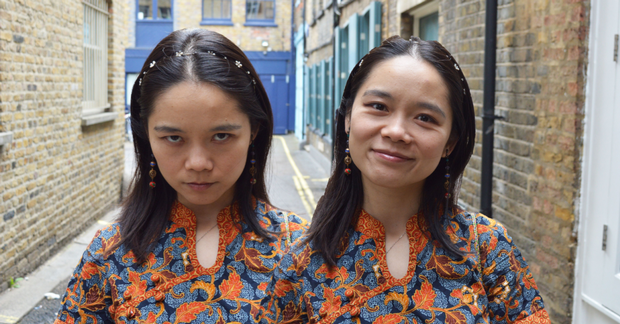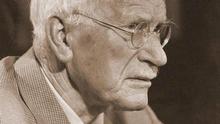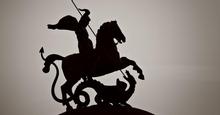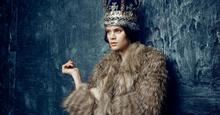Archetype & Personality Type: From Theoretical to Personal
This is the third article in a four-part series discussing the relationships between Jung’s theories of archetypes and psychological types, as assessed by the Pearson-Marr Archetype Indicator® and Myers-Brigg Type Indicator® instruments, respectively. The first article discussed the ways the theories of archetype and type converge and diverge—how they overlap and where they are distinct. The second article discussed empirical correlations between the two instruments from a large study we conducted. This current article presents the insights we gained from qualitative research through workshops conducted with people who took both the PMAI® and MBTI® instruments. The final article in the series will cover our analyses of the PMAI archetypes and MBTI types in cultural narratives presented at a Jungian conference.
Archetype and Type: A Brief History
We are not the first theorists and practitioners to bring Jung’s theory of archetypes and psychological type together—our work is the latest contribution at the end of a long legacy. Jungian analyst Toni Wolff first brought the two theories together in Structural Forms of the Feminine Psyche (1956), where she presented four feminine archetypes and linked them with the four preferences of Jung’s psychological type. Several people, through the years since, have presented their associations of archetypes—often presented as characters—and how they are associated with personality type—often linked with the preference pairs.
The author and theorist most influential to our work is Tad Guzie, PhD, a past president of the Association for Psychological Type International (APTi), an MBTI professional, and professor and researcher at the University of Calgary, Alberta, Canada. For years through the 1980s and early 1990s, Guzie, in partnership with his wife, Noreen, ran workshops across Canada and the United States on their ideas of how archetypes and personality types are expressed within a personality. Guzie’s (2016) idea was that the archetypes (not the PMAI archetypes, ones he theorized, but very similar in nature to the PMAI) represented a person’s "great story":
My Great Story is the source of my energy and values and motivation, and this gives body to my psychological type. My Great Story helps to explain why I act like an ISFJ or an ENTP in just the way I do. My archetype helps to tell me why I am quite different from others who are the same psychological type as myself. (p. 170)
The archetypes are guiding and dynamic, that is, active narratives impacting the expression of type. This marriage of archetype and type that the Guzies taught resonates with what we have discovered in our work, bringing the two theories together through their respective instruments. Distinct from other theorists, Guzie worked not only with the preference pairs but with whole type, reflected in our work as well.
Nature (Type) and Nurture (Archetype)
Where Guzie used the term great story to indicate the archetypal element, we use narrative. We also went a step further, linking the dynamic, context responsive archetypes to a nurture element of personality and the innate, unchanging structure of personality type with a nature aspect of personality. That is, the PMAI instrument is designed to respond to an individual’s current situation by reflecting the archetypal narratives that are active (the PMAI Profile ranks a person’s 12 archetypes from most active to least active), whereas personality type has an unchanging structure and is considered innate. Even through our typological development and stretching into opposing preferences, the structure—dominant, auxiliary, etc.—of our type does not change.
However, if you get a new job, get married, divorced, have a child, or experience other significant life changes, the PMAI assessment will most likely reflect these changes in the archetypal narratives active in your life.
Archetypal Narratives & Typological Expressions
In our workshops, we found that the empirical correlations from our large study (discussed in the previous article in this series) did hold true for the most part; people with Thinking and Judging preferences tended to have high Ruler and Sage, whereas people with Intuition and Feeling preferences tended to have high Caregiver and Magician. These correlations, both empirical and qualitative, show up when we view the PMAI archetypes as characters, and this alone is insightful.
Yet we found working with the archetypes as an environmental context-driven narrative (nurture) in relation to a person’s personality type (nature) exposed the deeper layers of the relationship between archetype and type.
Our lives are lived in different environments or contexts: your work role and organizational culture draw out certain attributes and qualities, whereas hanging out with friends or our family are contexts that tend to bring out even different qualities. Some people, and some types, may express more or less differences in how they behave across various contexts, but to a degree, we all experience more or less ease of expression with the various parts of ourselves in specific relationships, environments, and situations, such as with a particular colleague, with one’s family, or when one is on vacation.
Allies & Dominant Processes
In the workshops, we found that people’s most activated archetypes, their Allies (the top three to four archetypes in their Profile), were associated with the realms of everyday life, especially, but not exclusively, work. We are familiar and comfortable with these narratives as they are linked to the gifts and strengths of our dominant, and sometimes auxiliary, processes. Thus, the archetypal narratives that we habitually bring to work, or that our work roles and cultures draw out in us, tend to bring out our personality type’s talents. When we are in work environments or cultures that do not draw on our personality strengths, we are typically exhausted, drained of vitality, and not as happy. This concordance between the archetypal narratives and personality preferences extends to other areas of everyday life as well; on one level, poor relationships can be a mismatch between the archetypal dynamics and our personality type.
Shadows of Overuse and Underuse
As you have likely experienced yourself, where we are unconscious is the richest part of ourselves for growth. Through our work, we have distinguished two types of shadows: the dark side of Allies and personality type gifts from overuse, and those aspects of personality (preferences and archetypes) that receive the least energy from us or are underused.
Overuse of our gifts and favored narratives.
We all have strengths, gifts, and talents. We all shine somewhere, where we are exceptional, and where we receive deserved attention. These attributes correlate with our Allies and our dominant (and auxiliary) preferences. But where we receive light, we also cast shadow. There is a dark side to our good side, and this typically comes out in an overuse of our strengths.
When we rely too heavily on our favored preferences (dominant and auxiliary), we are bound to conflict with people and situations that need, require, or are demanding alternative qualities and attitudes from us. This is true of the archetypal narratives of our Allies as well; if we rely too heavily on the Jester narrative, for example, at some point it will cause problems when it is inappropriate for the context. Overuse of our type preferences and Allies causes rigidity in the expression of our personality type. The stress and rigidity of this situation will bring out our darker qualities.
Underuse of archetypal narratives and typological preferences.
In personality type, this is most often linked with our inferior process, though the tertiary process can show up here too. In our PMAI archetype Profile, the bottom two archetypes represent the archetypal narratives with the least energy dedicated to them. In the same way, the inferior (tertiary) processes are the preferences with the least amount of psychic energy devoted to them.
Expressions or eruptions of underused parts of our personalities are different from the shadows generated by overuse of our strengths and gifts. First, our underused preferences and archetypes are more often experienced as eruptions and/or are confusing, compared to overused strengths that we are typically confident about using. Our unconsciousness with our strengths and Allies is an unawareness that they are not working or causing more problems. Our unconsciousness with our underused archetypes and preferences is that we do not understand them, identify with them, or feel comfortable expressing them.
In previous PMAI research, we surveyed users on their relationship to their lowest archetypes and we found that most people had one or both of these relationships: 1) they actively disliked this character or narrative and it was projected onto others; and/or 2) they did not understand or identify any part of themselves with this archetype; it was just not on their radar. Both descriptions—actively disliking and projecting or not identifying with the qualities at all—are apt ways to describe how we often can experience our less favored preferences (tertiary and inferior processes). Some ways that these shadows of underuse show up are feeling consistently disturbed or de-centered by a person or situation, and in those problems or issues that we cannot seem to resolve, and we don’t know why. In this latter case, it may be that the trouble is caused by an archetypal narrative being activated that you are simply unaware of and do not understand.
How to Work with Shadows
When you identify an overuse of your favored preferences, you will most likely also notice that the archetypal narratives linked to them are also overused. In this case, we coach people to lean into their Treasure Chest—these are the archetypes in the middle of your PMAI Profile (fourth to tenth positions). These archetypes are accessible to you, especially the higher ones, for development. You can learn about them and consciously practice bringing their attitudes, perspectives, and gifts into the problematic situation. Connect your Treasure Chest archetypes with your personality type preferences, especially the auxiliary and tertiary processes, and lean into these strengths as well.
If your least used preferences and archetypes—shadows—have been triggered, reflect and determine the nature of the situation: is this a projection of attributes you actively dislike or something that you do not recognize or understand at all? If projection, work on reclaiming that part of you back to yourself; it can help to identify where in your life story it emerged from. Study this archetype for its positive qualities and gifts so you can appreciate it more. Getting to know your lowest archetypes will help with those that you do not recognize or identify with as well. And link these archetypes with your least favored preferences, especially the inferior process. Get to know the drives, motivations, and gifts of your inferior process; like your dominant preference, this type has gifts, strengths, and real value.
Remember, all parts of our personality—archetypal or typological—have gifts and challenges, light and dark aspects. Getting to know your darker attributes will not only bring insights into how to resolve issues but can lead to acquiring new gifts as well. Deeper discussions of archetypes as personalities and as narratives can be found in books by PMAI authors: What Stories Are You Living? Discover Your Archetypes – Transform Your Life! by Carol Pearson and Finding Your Story: Using Archetypes to Guide Your Personal Journey by Hugh Marr.
Guzie, N. M., & Guzie, T. W. (2016). About Men & Women: How your masculine and feminine archetypes shape your destiny, understanding your personality, goals, relationships & stages of life a complement to the psychological types. Enlightenment Publications.































_thumb.png)
_thumb.png)
_thumb.png)
_thumb.png)

